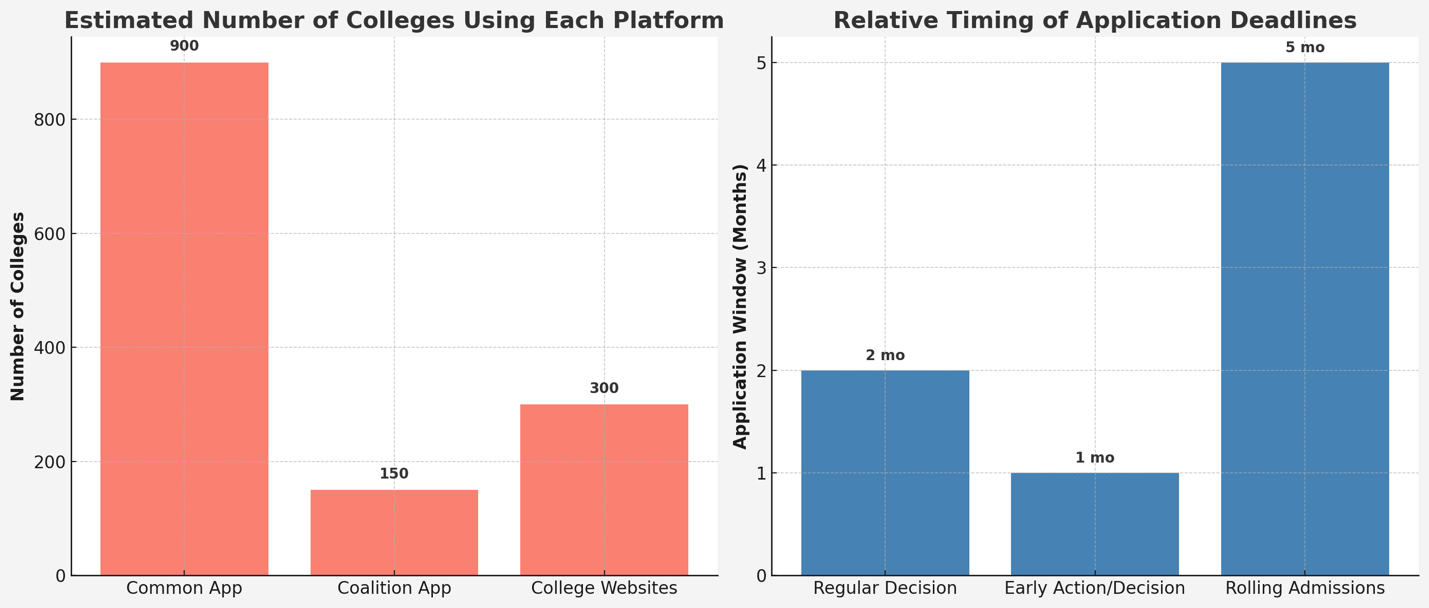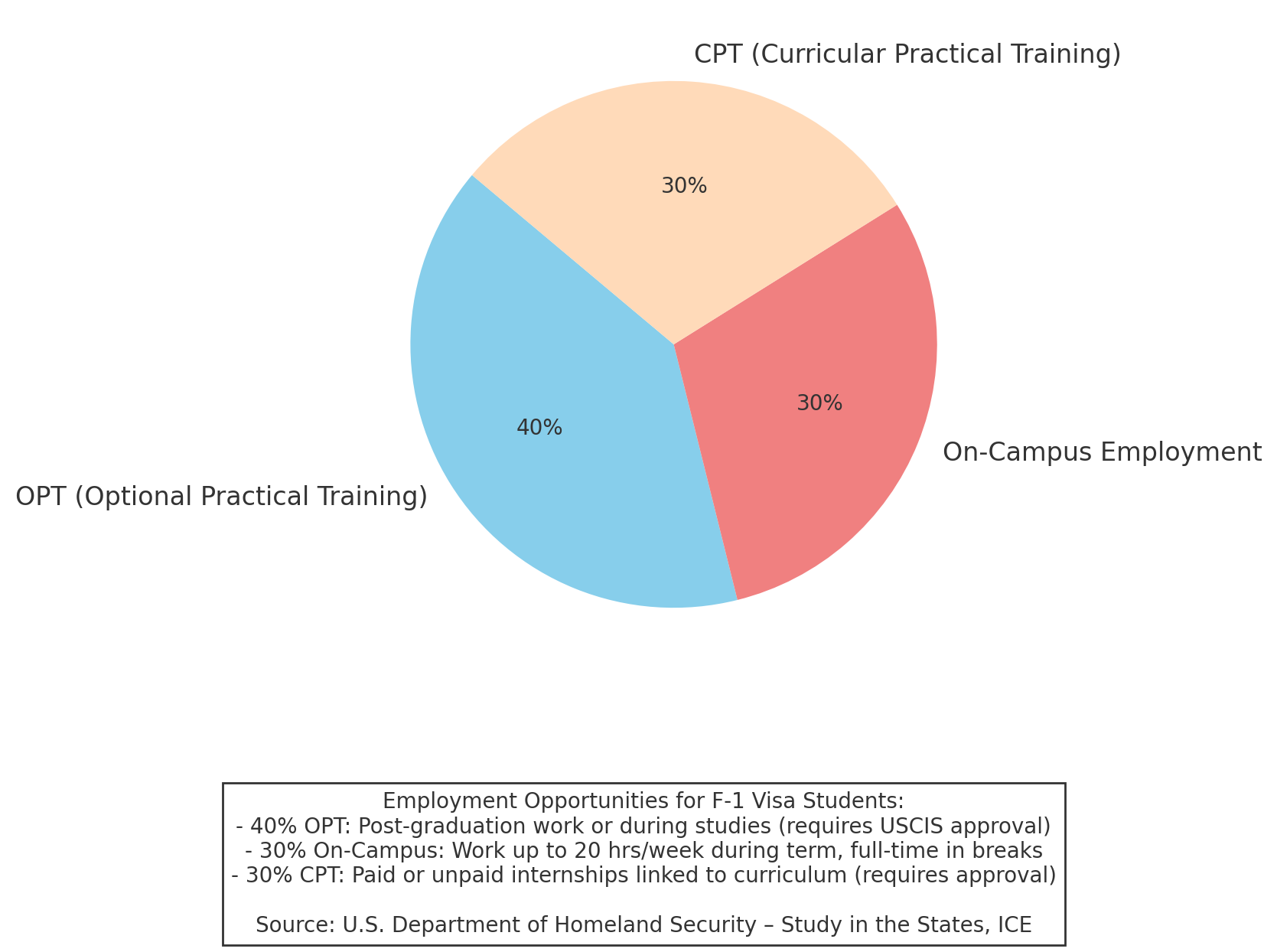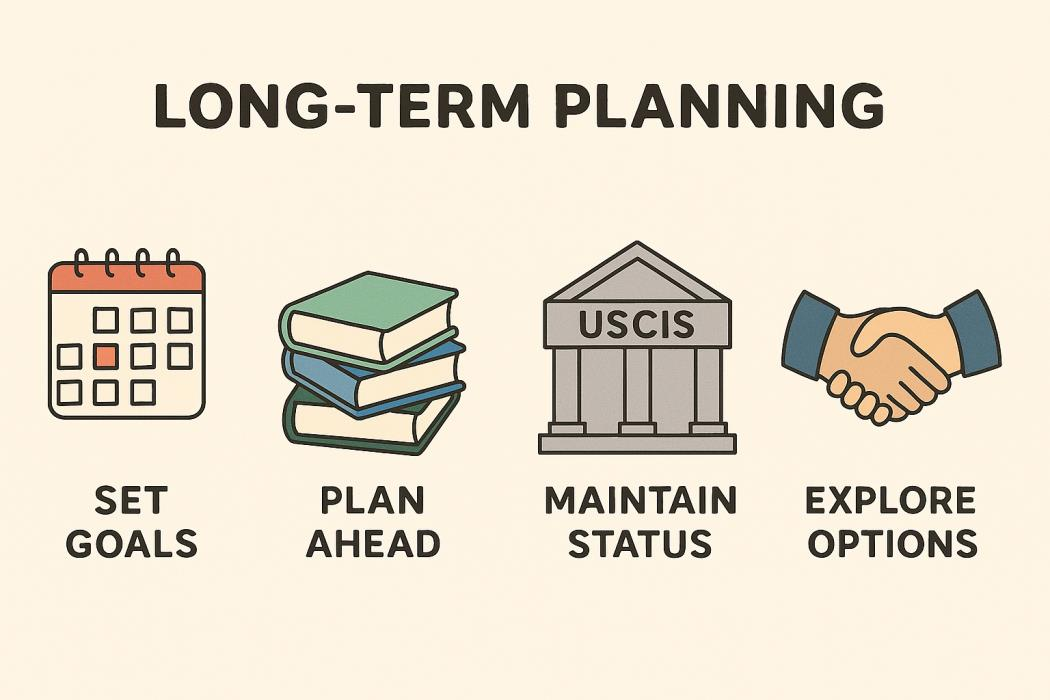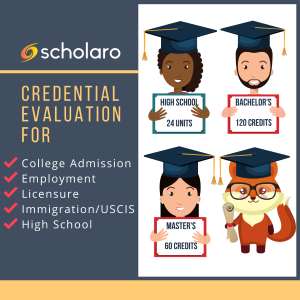
Applying to college in the U.S. as an international student takes planning, patience, and knowing how the system works. You’ll deal with different admissions requirements, visa paperwork, and financial limitations compared to domestic applicants. This guide walks you through the full process—from choosing schools and submitting applications to securing an F-1 visa and finding funding—so you know what to expect at each step.
How to Apply to College in the U.S.
If you're starting from scratch, here's how to apply to college in the U.S. as an international student—step by step. This process can take a year or more, so give yourself plenty of time.
1. Choose Your Colleges
Make a list of schools that offer your intended major and accept international students.
Consider admissions competitiveness, cost, location, and support services for international students.
2. Check Admission Requirements
Review each college’s admissions page for international applicants.
Look for ∫⁄¡œ’˝ƒÐ¡ø expectations, English proficiency tests (TOEFL, IELTS, Duolingo), and whether SAT/ACT scores are required or optional.
Some schools may ask for credential evaluations of your transcripts (e.g. ∫⁄¡œ’˝ƒÐ¡ø)
3. Prepare Your Application Materials
Personal statement or essay (topics vary by school).
Letters of recommendation (usually 1–3).
Official transcripts (translated and notarized if not in English).
Test scores (if required).
Proof of English proficiency.
Valid passport copy.
Application fee (or request a fee waiver if eligible).
4. Submit Applications
Use platforms like the or apply directly through school websites.
Double check deadlines: most fall between November and January, though some schools have rolling admissions.
5. Wait for Decisions
Most U.S. schools notify applicants between March and April.
Some may request interviews or additional information in the meantime.
6. Accept Offer and Pay Deposit
Once admitted, choose your school and pay the enrollment deposit (if required).
The school will then issue your Form I-20 for the visa process.
7. Apply for Your Student Visa
Pay the SEVIS fee and fill out the DS-160 visa form.
Schedule and attend your F-1 visa interview with your I-20, passport, and financial proof.
8. Make Pre-Arrival Plans
Book housing (on-campus or off-campus).
Buy health insurance if not provided by the school.
Book flights and plan to arrive before orientation begins.
This is the basic structure of how to apply to college in the U.S. Each step can take weeks or months, so staying organized and starting early makes all the difference.
Researching U.S. Colleges and Universities
Start by figuring out which colleges actually make sense for you to apply to. Not every school admits international students, and not all offer support once you're there.
What to look for:
International student admissions – Confirm that the college accepts international applicants and has dedicated support services (like an international office).
Academic programs – Focus on schools that offer your intended major or area of interest.
Acceptance rates – Some schools admit more international students than others. Examples: , and are known to admit a high percentage.
Location and cost of living – Living expenses vary a lot by state and city. Urban schools tend to cost more.
Accreditation – Only apply to accredited U.S. colleges, especially SEVP-certified ones (you need that for a visa).
Useful tip: Create a shortlist with a mix of reach, match, and safety schools. You’ll want options.
Admission Requirements
When applying to U.S. colleges as an international student, you need to meet several key admission requirements:
Academic Credentials
∫⁄¡œ’˝ƒÐ¡ø Expectations: Many institutions look for a minimum ∫⁄¡œ’˝ƒÐ¡ø of 3.0 on a 4.0 scale. However, some schools may accept lower ∫⁄¡œ’˝ƒÐ¡øs. For example, the University of New Orleans requires a minimum ∫⁄¡œ’˝ƒÐ¡ø of 2.25 for international applicants.
Standardized Tests
SAT/ACT Scores: While not always mandatory, strong SAT or ACT scores can enhance your application. Some universities may waive these tests or consider them optional. For instance, Iowa State University does not require SAT or ACT scores for admission but considers them if submitted.
English Proficiency: Non-native English speakers typically need to demonstrate language proficiency through tests like:
TOEFL: Minimum scores vary; Penn State University requires at least 80 on the internet-based test.
IELTS: A common minimum is 6.5 overall.
Duolingo English Test: Some schools accept this test with varying minimum scores; for example, the University of New Orleans requires a minimum score of 100.
Application Essays and Recommendations
Personal Statement: Your essay should reflect your unique experiences and perspectives. Authenticity is crucial; admissions officers seek genuine insights into your character.
Letters of Recommendation: Secure recommendations from teachers or mentors who can attest to your academic abilities and personal qualities.
Understanding and fulfilling these requirements is essential for a competitive application. Always verify specific criteria with each institution, as standards can differ.
Application Process

Left: Shows how widely each application platform is used by U.S. colleges. Right: Compares the relative timing windows for major U.S. college application deadlines.
Once you’ve narrowed down your list and reviewed each school’s admission requirements, it’s time to apply. Application systems and deadlines vary, so stay organized and pay attention to details.
Application Platforms
Common App () – Used by over 900 colleges, including many that accept international students.
Coalition App () – Another centralized platform, mostly used by selective schools.
Individual college websites – Some schools (especially public universities) require you to apply directly through their own system.
Deadlines
Regular Decision – Usually between January 1 and March 1.
Early Action / Early Decision – Typically November 1 or 15. These may improve your chances but are more restrictive.
Rolling Admissions – No set deadline; schools review applications as they receive them. Better to apply early to secure spots and aid.
Application Materials You’ll Need
Official high school transcripts (translated into English and sometimes evaluated by a third-party service, such as ∫⁄¡œ’˝ƒÐ¡ø).
Test scores (SAT, ACT, TOEFL, IELTS, Duolingo, etc.)
Personal statement/essay
Letters of recommendation
Copy of your passport
Application fee (usually $50–$100 per school)
Fee Waivers
Some schools offer application fee waivers to international students. You’ll need to request these directly from the admissions office.
Follow-up
After submitting, keep track of application portals or emails. Schools might request additional documents or updates.
For detailed instructions, many schools provide international-specific pages, such as .
Financial Planning

Studying in the U.S. requires careful financial planning. As an international student, you won't have access to federal financial aid like FAFSA, so you'll need to explore other options to fund your education.
Understanding Tuition Costs
Tuition Fees: Costs vary widely between institutions. Public universities often have lower tuition than private ones, but international students typically pay higher rates than domestic students. Annual tuition can range from $25,000 to $45,000, depending on the school and program.
Scholarships and Grants
Institutional Aid: Some U.S. colleges offer merit-based scholarships to international students. For instance, the provides such scholarships during the admission process.
External Scholarships: Various organizations offer scholarships specifically for international students. Resources like provide databases to search for these opportunities.
Tuition-Free Institutions
Certain U.S. colleges offer tuition-free education to international students:
: Provides 100% tuition coverage to all enrolled students.
: Offers free tuition to students from specific counties in Central Appalachia.
: Known as "Hard Work U," students work on campus to offset tuition costs.
Private Student Loans
Some private lenders offer loans to international students, often requiring a U.S. co-signer. Organizations like provide loans without a co-signer for students at select universities.
Employment Opportunities
On-Campus Work: F-1 visa holders can work up to 20 hours per week on campus during the academic term.
Curricular Practical Training (CPT): Allows students to gain work experience related to their field of study.
Optional Practical Training (OPT): Provides up to 12 months of work authorization after completing your studies.
Carefully assess your financial situation and explore all available funding sources to support your education in the U.S.
Student Visa Application
After receiving your acceptance letter from a U.S. college or university, your next step is applying for the F-1 student visa. This process is detailed and time-sensitive, so start early.
What is the F-1 Visa?
It’s the most common visa for full-time international students studying in the U.S.
You must be accepted by a SEVP-approved school before applying.
Steps to Apply for the F-1 Visa
Receive Form I-20
-Your school will send this form after you confirm enrollment and submit proof of financial support.
-You need this form to pay your SEVIS fee and schedule your visa interview.
Pay the SEVIS Fee
-Cost: $350 (as of 2024).
-Pay online at . Keep your receipt.
Complete the DS-160 Form
-This is the U.S. visa application form. Fill it out online: ceac.state.gov.
Schedule and Attend a Visa Interview
-Book an appointment at the nearest U.S. embassy or consulate.
-Bring your DS-160 confirmation, I-20, SEVIS receipt, passport, financial documents, and any school transcripts or test scores.
Interview Process
-Be prepared to explain your study plans, how you’ll pay for school, and what you plan to do after graduation.
-The consular officer may approve or deny your visa during the interview.
How much does the F-1 visa cost?
SEVIS I-901 fee: $350
Visa application (DS-160) fee: $185
(Source: travel.state.gov)
Is it hard to get an F-1 visa?
Approval depends on your preparation, documentation, and ability to show you’re a serious student with ties to your home country.
Visa denials often happen due to weak financial proof or unclear intentions to return home after your studies.
Once approved, your visa will be placed in your passport. You can enter the U.S. up to 30 days before your program start date.
Post-Acceptance Considerations
After securing admission to a U.S. college, focus on these key areas to ensure a smooth transition:
Housing and Accommodation
On-Campus Housing: Many universities offer dormitories or residence halls. Living on-campus can provide convenience and a sense of community. However, availability may be limited, and some institutions prioritize housing for first-year students.
Off-Campus Housing: Options include renting apartments or shared housing. This choice offers more independence but requires attention to lease agreements, utility setups, and commuting logistics. Some universities provide resources to assist students in finding off-campus accommodations.
Health Insurance
University Requirements: Most U.S. colleges mandate that international students have health insurance. Some institutions offer their own plans, while others may allow external coverage that meets specific criteria.
Private Insurance Plans: If opting for external coverage, ensure the plan complies with your university's requirements and provides comprehensive benefits, including medical evacuation and repatriation.
Orientation Programs
International Student Orientation: Universities typically conduct orientation sessions tailored for international students. These programs cover topics like academic expectations, cultural adjustment, and legal obligations. Attendance is often mandatory and highly beneficial.
Peer Mentoring: Some institutions offer mentoring programs where experienced students guide newcomers, facilitating smoother integration into campus life.
Addressing these considerations proactively will enhance your preparedness and overall experience as an international student in the U.S.
Employment Opportunities

As an international student in the U.S. on an F-1 visa, you’re allowed to work, but your options are limited and regulated. Here’s how you can legally earn income or gain work experience during and after your studies.
On-Campus Employment
You can work up to 20 hours per week during the academic year and full-time during breaks.
Jobs include library assistant, cafeteria worker, or campus tutoring.
No additional work authorization is needed, but the job must be physically on campus or directly affiliated with your school.
CPT allows you to work off-campus in a role directly related to your field of study.
You must get CPT authorization from your school’s international student office and be enrolled in a course that requires or offers academic credit for the work.
You must complete one full academic year before becoming eligible (unless you're in a graduate program that requires immediate training).
CPT can be part-time or full-time, but if you do 12+ months of full-time CPT, you lose your OPT eligibility.
OPT lets you work up to 12 months (or 36 months for STEM majors) after completing your degree.
The job must relate to your major.
Apply early—USCIS processing can take 2–4 months.
You don’t need a job offer to apply, but you must not exceed 90 days of unemployment once your OPT begins.
Social Security Number (SSN)
You need an SSN to work in the U.S. (even on-campus).
You can apply for one once you have a job offer and are enrolled full-time.
More info at:
Working while you study can help you manage costs and gain relevant experience. Just be sure to follow all visa rules to avoid jeopardizing your status.
Long-Term Planning

As an international student in the U.S., it's important to consider your options for staying in the country after your studies. Here are some pathways to explore:
Transitioning from F-1 Visa to Green Card
Employment-Based Green Cards: Securing a job offer from a U.S. employer can lead to sponsorship for permanent residency. Categories include:
EB-2 Visa: For professionals with advanced degrees or exceptional abilities. Requires a job offer and labor certification.
EB-3 Visa: For skilled workers, professionals, and unskilled workers. Also requires a job offer and labor certification.
Self-Petitioning for EB-1 Visa: Individuals with extraordinary abilities in fields like science, arts, or business may self-petition for this visa without a job offer.
Adjustment to Dual-Intent Visas: Transitioning to visas like H-1B (specialty occupation) allows for dual intent, meaning you can pursue permanent residency while on a non-immigrant visa.
Marriage to a U.S. Citizen or Lawful Permanent Resident: Marrying a U.S. citizen or green card holder can provide a direct route to permanent residency.
Networking and Professional Development

Building a robust professional network can significantly impact your career prospects:
University Resources: Engage with your institution's career services and International Student Services (ISS) for guidance on job searches and networking events.
Professional Associations: Joining organizations related to your field can connect you with industry professionals and provide access to exclusive job postings.
Alumni Networks: Connect with alumni from your university who are working in your desired industry for mentorship and potential job leads.
Online Platforms: Utilize platforms like LinkedIn to showcase your skills, connect with professionals, and stay updated on industry trends.
Proactively exploring these avenues can enhance your career trajectory and increase your chances of remaining in the U.S. post-graduation.
Conclusion
Applying to college in the U.S. as an international student takes time, research, and attention to detail. From choosing the right schools to navigating the visa process, each step requires careful planning. You’re not just applying to a program—you’re planning your education, your living situation, and your future career path, all in a new country.
Start by understanding what U.S. colleges expect from international applicants—academic records, English language scores, and personal essays are just the beginning. Standardized tests might be optional at some schools, but they can still improve your chances. Each college has its own admissions process, so you’ll need to track deadlines, document requirements, and application fees carefully.
Money is another major factor. Without access to U.S. federal aid, you’ll need to search for scholarships, grants, and other forms of institutional support. Some schools offer generous aid packages or even tuition-free education, but these are competitive. Having a financial plan before applying for your visa is essential—not just for the embassy interview, but also to meet your school’s proof-of-funding requirements.
Once you’re accepted, you’ll deal with logistics: housing, health insurance, transportation, and orientation programs. Many international students also look into part-time work and training opportunities like CPT ( or OPT ( which can help with both finances and experience.
Finally, think beyond graduation. If you want to stay in the U.S. to work, you’ll need to understand how F-1 status transitions into other visas—or how to plan your return home with the skills and qualifications you’ve gained.
None of this is simple. But if you break the process down, use the resources available to you, and ask the right questions, you’ll be in a strong position to succeed. U.S. colleges admit thousands of international students each year. You can be one of them—with preparation, patience, and a clear plan.

